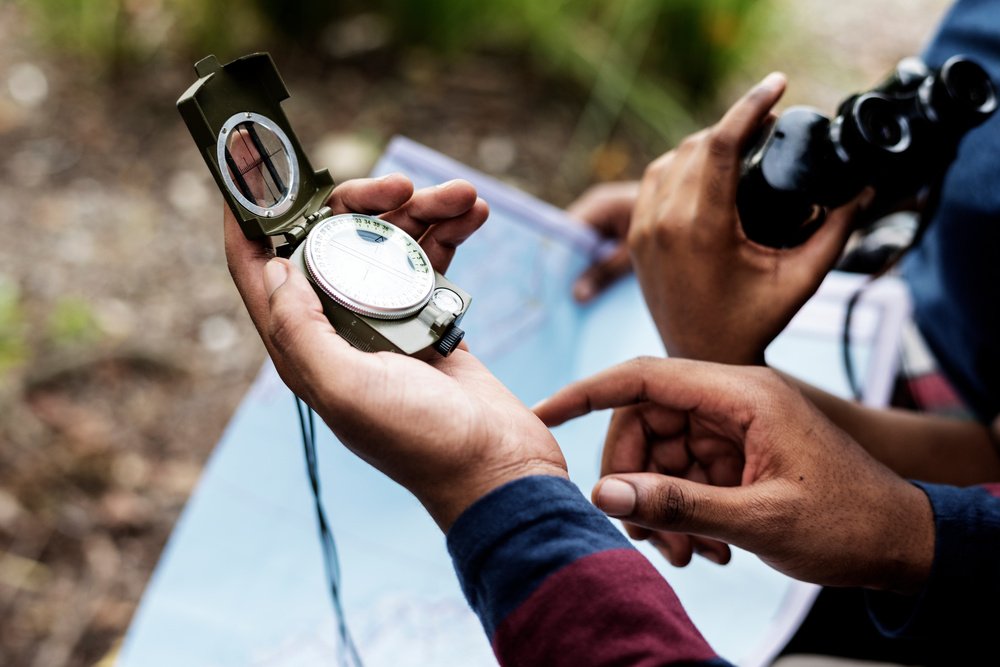Orienteering The Lost Art of Navigating with a Compass
With REDARC powering all our outdoor enthusiast navigating gear, we’ve been spoiled. We may bring them along, but how often are we using compasses and maps? Knowing how to navigate with a compass and a map is a lost but highly critical skill for the experience overlander.
Compass and map navigation has been organized into a sport of orienteering. But before it was a sport, navigating with a compass and map was a matter of survival. Before there were smartphones and GPS, a compass was the most important tool for guaranteeing you didn't get lost in the wilderness.
Orienteering Basics
Anyone looking to add a little adventure to the overlanding experience might want to consider orienteering. Whether you practice as a sport or just utilize it in favor of GPS navigation, orienteering is both an adventure and a challenge and a survival skill.
The basics start with understanding how a compass works. Simply put, a compass relies on the Earth's natural magnetic field to show direction. A functioning compass always points north. Combined with knowing where you are, knowing north tells you what direction to take in order to reach your destination.
Learning to use a compass isn't hard. It is as simple as learning how to use cam straps for overlanding or camping. Once you learn the basics, it becomes second nature. The challenging part is combining your compass with maps.
Orienteering As a Sport
You can use basic maps to navigate roadways on your overlanding trip. In the sport of orienteering, you are not dealing with established roads. You might not even be dealing with actual trails.
The foundation of successful orienteering is orienting your map. Maps are printed so that north is at the top of the page and south at the bottom. Orienteers begin their adventures by rotating their maps so that the top edge of the paper is pointing north. That's where a compass comes in handy.
From there, the orienteer looks for landmarks, topographical indicators, or other things that can help them determine their current location on the map. With location and north identified, you’re free to begin navigating.
Navigating Unknown Roads
Orienteering takes some time to learn. It takes practice to get right. If you are just looking to navigate unknown roads without relying on GPS, a compass might be optional. But you will need up-to-date maps.
Navigating via paper maps isn't as hard as it sounds. Before the days of GPS and smartphones, our parents and grandparents used paper maps all the time to understand direction and topology. All you need to successfully navigate with maps is your current location. If you know where you are, you can get where you need to go and what topology you can cross with the gear you’ve got.
Do you normally travel with a partner or your family? Make a game of navigating. Let one person handle the map while another drives. The two work together to stay on track. It’s a critical skill to teach your kids as you take them on trips with you.
Keep the Old Skills Alive
As much as we appreciate modern technology and what it offers outdoor adventures, it is still a good idea to keep the old skills alive. Continue using cam straps for their convenience and superior performance. But also maintain your rope tying skills. Using paracord frequently? You may want to check out our brand-new product Roperoller: https://www.rollercam.com/shop/roperoller-with-accessory-cord.
Take full advantage of GPS and smartphones but make a point of learning how to use a compass and maps. There may come a time when your phone will not help you. If you cannot navigate using the “old school” methods, you may find yourself in a dangerous position.




The Overland Kit: the official collection of straps for every outdoor adventure. Buy the kit to save 14%!
The Rollercam® Overland Kit is the ideal combination of all of our best-selling Rollercam® products, including the Roperoller and all-new strap sizes in various end types. Perfect for gifting or stocking up to replace old straps. Includes various end types and strap lengths to survive all the elements. Adventure safe and keep your gear secure with this pack of straps.
Includes:
Two (2) 2’ Rollercam® Expedition Straight End
Two (2) 3’ Rollercam® Expedition Straight End
Two (2) 4’ Rollercam® Expedition Straight End
Two (2) 9’ Rollercam® Expedition Straight End
Two (2) 15’ Rollercam® Expedition Straight End
Two (2) 6’ Rollercam® Expedition Loop End
Two (2) 6’ Rollercam® Expedition Hook End
NEW: Two (2) 3’ Rollercam® Expedition 0.75” Strap
NEW: Two (2) 3’ Rollercam® Expedition 1.25” Strap
NEW: One (1) 2-Pack Roperoller
Details:
Featuring Patented Rollercam® Buckle
Rollercam® Expedition Graphite
Polypropylene Strap
Triple-Bar Tack Stitching
Woven-in Length
T-135 Polyester Thread
Working Load 350 lbs
US Patent 6877189B2 | Always Check for Wear | Working Load 350 lbs
Designed in the Utah Deserts, Made in China